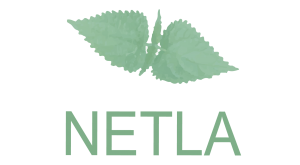Multilingual school children’s use of Icelandic in daily life
DOI:
https://doi.org/10.24270/netla.2024/11Keywords:
læsi, málnotkun, heimalestur, fjöltyngdir nemendur, skólaþróun, íslenska sem annað málAbstract
This research aims to collect information on how multilingual school children in Grades 6–10 use Icelandic, English, and home language, how they evaluate their skills in these languages, and to test relations between language use and reading habits with their estimated Icelandic language skills. The incentive is to enable teachers and school authorities to better organise the support and instruction that are provided to multilingual children. The research data includes individual interviews with 78 multilingual students in Fellaskóli Reykjavík in spring 2022. This group is 54% of all multilingual students in Grades 6–10 and approximately 43% of the total number of learners at this age in Fellaskóli.
In Iceland, the vast majority of children start preschool at two years of age, and even younger, where they spend eight to nine hours a day, five days a week. In pre- and compulsory school, Icelandic is the main language, whereas, outside school, English is increasingly being used by youth, mainly on the internet. An increasing number of learners speak a third language with their families. Thus, bilingualism is the norm in
Iceland, and multilingualism is very common. Despite long school days, the evidence indicates that multilingual children do not learn much Icelandic during the pre-school years (Aneta Figlarska et al., 2017; Hjördís Hafsteinsdóttir et al., 2022; Sigríður Ólafsdóttir & Ástrós Þóra Valsdóttir, 2022). Therefore, they start compulsory school with weak Icelandic language proficiency. Over the next 10 years that follow, the gap between first-language Icelandic learners and multilingual learners tends to grow with each school year (Elín Þöll Þórðardóttir, 2021; Sigríður Ólafsdóttir et al., 2016). According to PISA 2022, 63% of immigrants in Iceland did not reach the minimum level of reading literacy. It is evident that Icelandic schools have to reconsider how they can support and teach multilingual youth and focus better on Icelandic language use. In compulsory school, students must read subject materials and discuss and write about the content, which will enable them to increase their understanding, talking, reading and writing in Icelandic (Hemphill et al., 2019; Lawrence et al., 2016). Thus, active and rich Icelandic language use that is interwoven with studies in all fields and at all school levels should result in regular progress in Icelandic language proficiency.
On the other hand, multilingual children develop skills in English and their home languages according to their use of these languages, inside and outside school, with friends and family and on the internet. Thus, the application of these languages is far from as rich as that in the Icelandic language. The strongest influencing factor on language skills and development is indeed how each language is used (Proctor & Zhang-Wu, 2019). Here, the focus is on the Icelandic language, a foundational social and learning instrument in school activities, which drives the academic progress of multilingual children in Icelandic schools (Sigríður Ólafsdóttir et al., 2016).
The language participants claimed to mainly use at home was Polish. Icelandic seems to be the dominant language in the classroom (90%), but this use drops during breaks. Approximately 45% of students use Icelandic on school breaks, and 44% use English. English seems to be the dominant language when reading information on the internet and communicating with peers on school breaks.
Just below half of the participants claimed they read at home five times per week or more and just above half of the participants claimed they read in Icelandic. Approximately 85% of students found it very important or important to learn Icelandic, 82% English, and 73% the home language. Most students said they understand (81%), speak (77%), read (73%) and write (77%) English well or very well. These proportions were lower for Icelandic, regarding understanding (69%), speaking (63%), reading (69%) and writing (60%).
Those students who spoke Icelandic at home assessed themselves with a significantly better understanding of Icelandic than the others. Those who read Icelandic at home assessed their proficiency in writing Icelandic higher than the others. The more often the students read Icelandic at home, the better they assess their proficiency in speaking Icelandic.
The implications of these research findings are twofold. First, it is important to increase reading at home and ensure that reading is in Icelandic. Second, the multilingual learner’s self-assessment of their own proficiency in Icelandic is very likely an overestimation. Therefore, it is important to respect the right of multilingual learners to receive realistic feedback about their current situation and progress and organise the teaching around individual needs.
Downloads
Published
Issue
Section
License
Copyright (c) 2024 Auður Pálsdóttir; Sigríður Ólafsdóttir; Örn Þór Karlsson

This work is licensed under a Creative Commons Attribution 4.0 International License.
